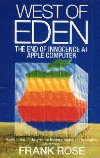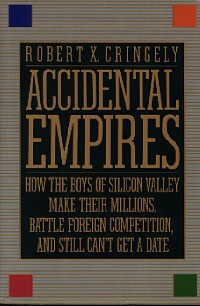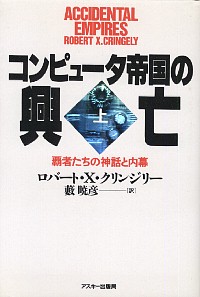 |
The Japanese version was published in March 1993 as translated by Akihiko
Yabu as first and second volume. Thereafter, in December 1994, a new edition
with first and second volume was bounded and published.
日本語版には、あとがきも収められ、その上で、「日本語版によせて」という序文も加えられており、この中で作者は第二次大戦後の日本に起こった経済的奇跡(危機に対する反応〜必然的)とカリフォルニアに起こったパーソナルコンピュータの奇跡(「チャンス」に対する反応)を比較し、シリコンバレーで起こったことを良く理解することが、今後の日本の成長へのヒントになると結んでおり、約10年たった今日でも新鮮な視点である。
In the Japanese version, the afterword was also included, and in addition, a
preface to "for Japanese version" was also added, in which the author wrote
an economic miracle compare that happened in Japan after the Second World
War (reaction to “the crisis – inevitable”) and the miracle of the personal
computer that occurred in California (reaction to "opportunity"), it would
be a hint for future growth in Japan to better understand what happened in
Silicon Valley. It is a fresh perspective even today even after about 10
years.
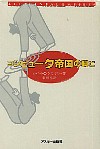
Softcover Combined Version |
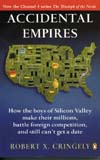 The
left is a British version of the paperback version.
"Accidental Empires"は1996年版で、米国初版の1992年版に加えて、
16章、17章として追加したものだ。
"Accidental Empires" is a 1996 edition, in addition to the 1992
edition of the first edition of the United States, it was added as
Chapter 16, Chapter 17. TV
Tie-in Editionとあるので、テレビ放映とタイアップして改訂されたもののようだ。
As it is with TV Tie-in Edition, it seems to have been revised after
tie-up with TV broadcasting.
この中では、初版執筆以降の5年間のマイクロソフトやApple、NeXTやライバル会社たちの動静、インターネットの普及やその未来などについて言及している。
Among them, it is mentioned that the movement of Microsoft, Apple,
NeXT and rival companies, the spread of the Internet and its future
for the past five years since the first edition was written. The
left is a British version of the paperback version.
"Accidental Empires"は1996年版で、米国初版の1992年版に加えて、
16章、17章として追加したものだ。
"Accidental Empires" is a 1996 edition, in addition to the 1992
edition of the first edition of the United States, it was added as
Chapter 16, Chapter 17. TV
Tie-in Editionとあるので、テレビ放映とタイアップして改訂されたもののようだ。
As it is with TV Tie-in Edition, it seems to have been revised after
tie-up with TV broadcasting.
この中では、初版執筆以降の5年間のマイクロソフトやApple、NeXTやライバル会社たちの動静、インターネットの普及やその未来などについて言及している。
Among them, it is mentioned that the movement of Microsoft, Apple,
NeXT and rival companies, the spread of the Internet and its future
for the past five years since the first edition was written. |
Accidental Empires: published in November 1991.
Robert X, Cringely、Addison
Wesley
、324ページ、A5版。
Robert X, Cringery, Addison Wesley, 324 pages, A5version.
コンピュータ帝国の興亡(覇者たちの神話と内幕)
上・下;1993年2月刊。The
rise and fall of the computer empire (the myth and the inner title of the
champion) first and second volume; published in February 1993.
Robert X, Cringely著、薮曉彦訳、アスキー、上254ページ、下277ページ、A5版。
Robert X, Cringery, Akihiko Yabu, ASCII, first volume 254 pages, second
volume 277 pages, A5 version.
コンピュータ帝国の興亡;1994年12月刊。The
rise and fall of the computer empire; published in December 1994.
Robert X, Cringely著、薮曉彦訳、アスキー382ページ、A5版。
Robert X, Cringery, Akihiko Yabu, ASCII 382 pages, A5 edition.
Accidental Empires:1991年11月刊。Accidental
Empires: Published in 1996. Robert
X, Cringely、
ぺPenguin
Books(UK)
、358ページ、Paperback版。
Robert X, Cringery, Pen Penguin Books (UK), 358 pages, Paperback Edition.
|
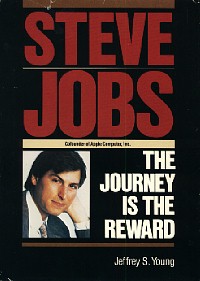
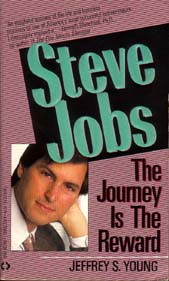 STEVE JOBS THE JOURNEY
IS THE REWARD
STEVE JOBS THE JOURNEY
IS THE REWARD


